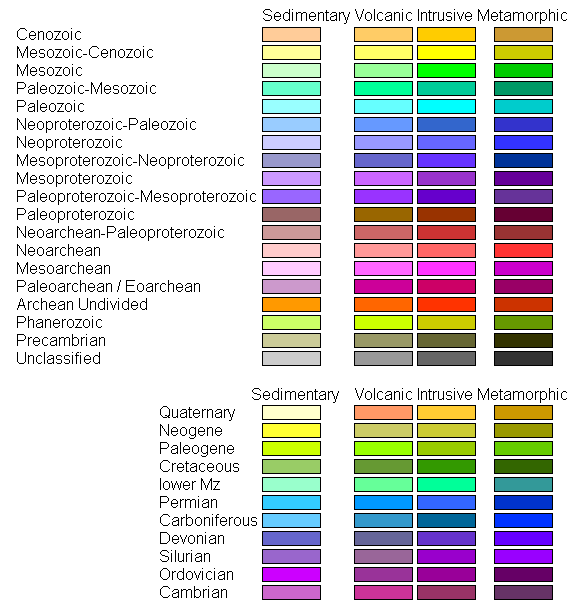Middle East 30N 50E
Steven Dutch, Professor Emeritus, Natural and Applied Sciences, Universityof Wisconsin - Green Bay
Scale: 1 pixel = 10 km. 10-degree grid; Lambert Conformal Conic Projection, Center 30N 50E
Legend
Ocean Floor Ages

Tectonic Structures

Topography

Land Geology

Discussion
Petroleum geologists divide the world into two categories: the Middle East and everything else. The reason the Middle East is so oil rich is directly due to plate tectonics. Until about 10 my ago, the Arabian Plate was attached to Africa and the Red Sea did not exist. If it seems odd that Arabia should break off just as Africa was beginning to collide with Eurasia, that's probably exactly why it broke off. As long as Africa could move freely northward, it did, pulled ahead by its descending oceanic crust. But as soon as it began to collide with Spain, the remainder of the descending oceanic plate began to pull on the thick but brittle continental crust, breaking off Arabia as well as other pieces in the future Mediterranean.
Before collision, the northern margin of Africa had a typical passive margin of marine sedimentary rocks with organic matter. Scarcely did Arabia break away from Africa than it hit Iran. The collision pulled the passive continental margin into the subduction zone, heating the organic matter and speeding its transformation to petroleum. Simultaneously, it tilted the Arabian Plate, allowing petroleum to migrate up and away from the supduction zone. Finally, the collision deformed the rocks, creating traps for petroleum. And the tilting of the Arabian Plate even tilted the leading edge below sea level, creating the Persian Gulf, one of the few present-day epicontinental seas, allowing us to sail tankers half the length of the subduction zone to harvest that nice yummy petroleum.
The oil wealth of the Middle East is due to a continent-continent collision in exactly the optimum stage of evolution for maximum oil accumulation. The collision was square-on, creating ideal petroleum conditions from northern Iraq to Oman. The coast of Iran is also part of the deformed former passive margin, giving Iran abundant oil as well.
So the good news is we can use plate tectonics to understand why there is so much oil in the Middle East. The bad news is there's nothing else like it in the world. The closest counterpart might be the northern boundary of the Iranian Plate. But that collision is farther along. More of the petroleum precursors have been buried more deeply and thermally broken down to methane and graphite, and there has been more time for erosion to breach petroleum traps. Every so often there are predictions that the 'Stans will be the next Middle East, but so far they haven't. Still, they do have oil. One oil field is in the Caucasus, one of Hitler's objectives in invading Russia during World War II.
Return to Global Geology Index.htm
Return to Professor Dutch's Home Page
Created 11 April 2014, Last Update 19 January 2020